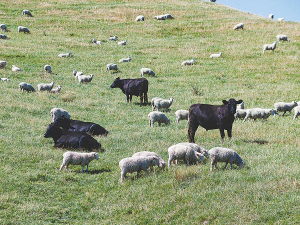Ministry for the Environment to sponsor Ballance Farm Environment Award
The Ministry for the Environment is joining as a national award sponsor in the Ballance Farm Environment Awards (BFEA from next year).
 The Ministry for the Environment's 2021 Greenhouse Gas Inventory says that for the year 2019, agriculture was New Zealand's biggest emitting sector.
The Ministry for the Environment's 2021 Greenhouse Gas Inventory says that for the year 2019, agriculture was New Zealand's biggest emitting sector.
The Ministry for the Environment’s (MfE) 2021 Greenhouse Gas Inventory revealed that for the year 2019, agriculture was among the two largest contributors to New Zealand’s gross Greenhouse Gas (GHG) emissions.
The report, which documents all of New Zealand’s human-generated greenhouse gas emissions and removals since 1990, shows that New Zealand’s gross emissions were 82.3 million tonnes of carbon dioxide equivalent (Mt CO2-e) in 2019.
The report states that emissions for the agriculture sector made up 48% of New Zealand’s gross emissions.
It also states that between 1990 and 2019, gross emissions increased by 26%, largely down to increases in methane from dairy cattle digestive systems and carbon dioxide from road transport.
On the whole, gross emissions in 2019 comprised 46% carbon dioxide, 42% methane, 10% nitrous oxide and 2% fluorinated gases.
The Greenhouse Gas Inventory is collated as one of New Zealand’s mandatory reporting obligations under the United Nations Framework Convention on Climate Change and the Kyoto Protocol.
It informs MfE policy recommendations on climate change and includes data that helps monitor New Zealand’s progress towards emissions reduction targets.
Farmer interest continues to grow as a Massey University research project to determine the benefits or otherwise of the self-shedding Wiltshire sheep is underway. The project is five years in and has two more years to go. It was done mainly in the light of low wool prices and the cost of shearing. Peter Burke recently went along to the annual field day held Massey's Riverside farm in the Wairarapa.
Applications are now open for the 2026 NZI Rural Women Business Awards, set to be held at Parliament on 23 July.
Ravensdown has announced a collaboration with Kiwi icon, Footrot Flats in an effort to bring humour, heart, and connection to the forefront of the farming sector.
Forest & Bird's Kiwi Conservation Club is inviting New Zealanders of all ages to embrace the outdoors with its Summer Adventure Challenges.
Grace Su, a recent optometry graduate from the University of Auckland, is moving to Tauranga to start work in a practice where she worked while participating in the university's Rural Health Interprofessional Programme (RHIP).
Two farmers and two farming companies were recently convicted and fined a total of $108,000 for environmental offending.

OPINION: The release of the Natural Environment Bill and Planning Bill to replace the Resource Management Act is a red-letter day…
OPINION: Federated Farmers has launched a new campaign, swapping ‘The Twelve Days of Christmas’ for ‘The Twelve Pests of Christmas’ to…